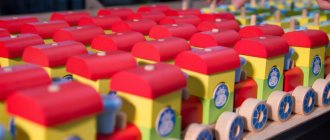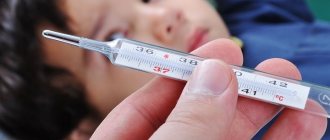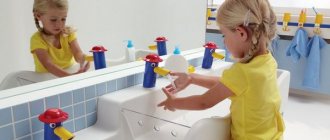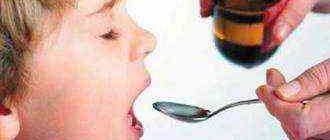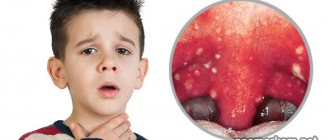Stories of people finding either a bone or a small children's toy in their nose or ear are not as rare as they seem. At the same time, it is always surprising how you can live and not notice the presence of a foreign body in your body. Doctors say that this is a fairly common occurrence. And it is not surprising that foreign objects are not immediately detected - children often push them into their noses or ears, and later they are afraid to tell or forget about the incident. What are the dangers of such objects and what you need to know about the existing deposits, AiF.ru was told by Vladimir Zaitsev, Ph.D., otolaryngologist .
What can get into a child's nose?
A child learns about the world, and this is quite natural. Having no experience, he does this by all available means, touches objects in his field of vision, takes them into his mouth, puts them in his ear, mouth, because for the baby this is just a game.
Less commonly, pieces of food get into the nose when a child vomits, coughs, or chokes while eating. Mostly, children playing without proper supervision end up with various objects in their noses; the most common among them are:
- Small round objects - beads, peas, cherry pits, small batteries,
- Pieces of plasticine
- Small parts from toys,
- Small buttons
- Metal objects - nuts, buttons, small coins,
- Tablets, dragees, capsules,
- Pieces of food - bread, fruit,
- Pieces of paper
- Lumps of cotton wool.
They are usually divided into 2 groups: organic origin - seeds, fruit seeds, pieces of food, insects, and inorganic - made of metal (X-ray positive, which are revealed in the image), from plastics and other materials (X-ray negative, which are not visible in the image).
The most dangerous among them are smooth round objects that can easily slip into the respiratory tract and cause asphyxia.
Types of foreign objects
According to statistics, ambulances receive approximately three calls a day related to the fact that a child has stuck a foreign object up his nose. Providing first aid when various types of foreign objects get into the nose.
Ascorbinka
If a child puts a vitamin in his nose, you should not immediately try to pull it out, since it most often dissolves and comes out of the nose on its own with mucous secretions. When the ascorbic acid is large, you need to pinch the unclogged nostril and exhale forcefully through the clogged one. It is important to warn him that inhalations are through the mouth and not the nose, otherwise it may aggravate the situation (it will get into the respiratory tract).
Tablet
If a child puts a tablet in his nose, the same manipulations should be carried out as with ascorbic acid. If you get into contact with a tablet intended for use by adults, you should immediately call an ambulance to avoid poisoning the child with potent drugs.
small toy
Most often, small toys, for example, Lego parts or wheels from cars, get into children's nasal passages. Without qualified assistance, it is practically impossible to remove such a small object.
Pieces of fruit, food
I often get fruit pits, nuts, peanuts, chewing gum, and candy into children’s noses. Food tends to decompose, so it is necessary to carry out rinsing with the help of medical personnel. Parents must control their children’s diet and make it as safe as possible.
Plasticine
If a child puts plasticine in his nose, then it is necessary to consult an otolaryngologist. Plasticine becomes soft in a warm place and if you try to remove it yourself, all the mucous membranes of the nose will be covered with it. Due to the chemical composition of plasticine, allergy medications should be given as a preventive measure.
Bean, pea, bead
If small round products get into the nose, follow the same steps as with tablets. Parents often catch babies stuffing beads into their nasal passages. You should make sure that there is one bead in the nose and not a large number. When a child puts beans or other small round objects (buttons) up his nose, it is necessary to seek medical help.
Objects of natural origin are especially dangerous to stick into the nose. They begin to grow quickly in a humid environment.
Seed
If a child puts a seed in his nose, there is no need to panic, as it does not interfere with breathing in any way. But you should not let your child pull out foreign bodies on his own, otherwise he may push them even deeper. You can blow out the seed by inhaling air through your nose, or consult a doctor.
piece of paper
In cases where a child has inserted a piece of paper into his nose, he should carefully pull it out with tweezers, while he must stand still so as not to injure the mucous membrane of the nasal passages. If your baby inhales, the paper may get into his throat and he will be able to clear his throat on his own. But doctors recommend avoiding such situations (the paper may get stuck even deeper), it is better if the child, on the contrary, exhales through the nose.
During hygiene procedures, parents use cotton wool to clean children's nasal passages, and then cannot remove it. If you cannot get the cotton wool out with tweezers without damaging the nasal mucosa, then you should use the method of blowing out a foreign object. To prevent a piece of cotton from going deeper into the nasal passage, children should not be allowed to scratch their nose. If all manipulations do not lead to results, you should consult a doctor.
Battery
If a child puts a battery in his nose, he should immediately seek qualified medical help. The battery can cause a chemical burn to the nasal mucosa, as well as melt the cartilage in the nasal septum.
Coin
If a coin gets into the nasal passage, it is necessary to take into account that it is a hard and insoluble object that can worsen the breathing process by standing across the nasopharynx. A coin can completely block the airway (asphyxia) if it enters the trachea. In such a situation, you need to call an ambulance as quickly as possible.
Symptoms of a foreign body in the nose
Symptoms that a child has beads, balls or others in the nose resemble signs of acute rhinitis:
- Itchy nose
- The child often blows his nose
- Copious liquid discharge,
- Frequent sneezing
- Nasal congestion, difficulty breathing through the nose.
A “fresh” foreign body in the nose is characterized by the sudden appearance of symptoms, paroxysmal sneezing. If an object is in the nose for a long time, there is constant congestion, purulent discharge streaked with blood, and there may be nosebleeds.
The presence of an object in the nose can be distinguished from a regular runny nose by one-sided symptoms - itching, pain and difficulty breathing only on the right or left.
Old foreign bodies are difficult to identify; their manifestations resemble the symptoms of chronic rhinitis, sinusitis; the inflammatory process can spread to the other nasal passage.
Small size
A foreign body that can get lost in the bowels of the body is usually small in size - these are various beads, buttons, bones, etc. If a child puts such an object in his mouth and it moves to the throat, then there are several options - either the child spit it out, or it may enter the hypopharynx and remain there in the pyriform sinus (small pockets located on either side of the side). This option can be called one of the most favorable. Alternatively, you can go to a clinic, where a specialist will remove everything using tools.
Article on the topic Tricky batteries. What objects do children put in their nose? If we talk about the nasal cavity or ear, then it’s more complicated, because everything is covered with mucous membrane. In addition, the nasal cavity is horizontal - a foreign body can get there and get stuck. If the size is small, then it may not be blown off or swallowed, i.e. it will not come back out on its own. After some time, the child forgets, and then does not pay attention and gets used to the fact that his condition has changed, for example, one nostril began to breathe worse.
And the foreign body in the nose begins to calcify, that is, become covered layer by layer with a certain mucus that the body produces for protective purposes. The body does this in order to keep the foreign body intact and not bother you. You can compare the process to the formation of pearls in a shell. Such a growth can only be detected endoscopically or even using a computed tomogram - for example, if the formation is far and deep. This kind of formation is called rhinolitis - a stone inside the nose.
The problem is discovered only through the efforts of the patient. In order for a doctor to see this rhinolitis, a person must come to him with complaints of worsening nasal breathing. If a person ignores such a signal, he can walk with such a stone for years. The advantage in this situation is that the situation is not an emergency.
As for foreign objects placed in the ears, children, in an attempt to explore the depth of the passage, can insert pins, matches, pen rods, etc. into them. Here, the foreign object can become awkward, across the passage. Can't get out. And this is extremely bad, because such an object can only be pulled out with the help of a doctor, and children do not particularly like to expose their ears to specialists. Often you even have to use anesthesia for such manipulation, which is not good. I think that parents should have conversations for preventive purposes, explaining to children that this should not be done.
In addition, foreign bodies in the ear can seriously injure the membrane, for example, if something sharp gets into the ear. There is also a modern problem - children are increasingly pushing plasticine, slime and other substances into their noses and ears. They soften from the heat, and it becomes extremely difficult to pull them out.
Minefield. Items in the house that children should keep away from Read more
What to do if a child puts a bead in his nose
If there is a suspicion that the child has a foreign object in the nose, you need to carefully examine the nasal passages in good lighting. If it is clearly visible, you can try to remove it by following these steps:
- Tilt the child's head forward, close the free nostril with your finger and ask the child to blow his nose forcefully,
- To provoke sneezing, for this, in a position with a bowed head, you can let the baby smell ground pepper, or tickle the nasal passage with a feather or a thin cotton wool. When sneezing, you should close your free nostril with your finger.
- If the child is small and cannot understand what is required of him, you can sit him in your arms, pinch the free nasal passage with your finger and sharply exhale some air into his mouth, as is done with artificial respiration.
If a bead, ball or other small object falls out, you need to examine the nose to see if there is any bloody discharge, and drip children's vasoconstrictor drops (sanorin, nazol, rhinonorm). Nasal breathing is quickly restored. But even with successful removal, you need to consult with an ENT doctor the next day.
If a bead, ball or other small object cannot be removed , you must ask the child to breathe only through the mouth , or close both nostrils with your fingers and cover with a plaster. This is very important so that when inhaling through the nose, an object does not enter the nasopharynx or trachea and cause suffocation. Next, you need to urgently take the baby to the doctor. At night, you can go to an urgent children's hospital, where there is an ENT doctor on duty.
Not recommended actions when providing assistance
In order not to harm the baby when providing first aid, you should absolutely not perform the following actions:
- When laying the child down, he should be in a sitting position. The horizontal position can help move a small object into the trachea,
- Rinse your nose with water and other solutions for the same reasons,
- Trying to remove a bead, ball or other small object using your finger, tweezers, sticks, hooks and other objects can push it deep and damage the nasal mucosa,
- Press firmly on the nostril in which the object is located,
- Place oil in your nose to make it easier for the object to come out. When inhaling through the nose, on the contrary, it can shift towards the respiratory tract.
It should also be remembered that it is better for young children (under 5 years old) not to try to remove a foreign body at home.
They may not be able to accurately follow instructions to blow their nose or sneeze, so it is best to take your child to the hospital right away.
Methods for removing foreign bodies from the nasal cavity in a medical facility
If a foreign body has recently entered the nose, the easiest way is to blow your nose intensively. If there is no effect, a solution of adrenaline or drops with a vasoconstrictor effect is sprayed into the nasal cavity and blown out again.
Removing a foreign body using tools.
Before removing it, children are anesthetized using a 10% lidocaine solution. Preschoolers may need anesthesia.
The instrument is selected depending on the characteristics of the foreign body. To remove a foreign body from a soft (cotton wool, paper, grass) or hard elongated (match) material, use tweezers. A round-shaped solid foreign body with a smooth surface is removed using a nose hook.
Surgery is required to remove rhinoliths, or in case of serious injury to the nose.
When a doctor's help is needed
If young parents do not yet have much experience in caring for a child, it is better not to tempt fate, but at the slightest suspicion of the presence of a foreign object in the nose, immediately consult a doctor. The following cases also require this:
- If the child is small,
- When a foreign body is not visible in the nasal passages,
- If attempts to remove an object from the nose are unsuccessful,
- When bleeding from the nasal passages,
- When the baby has a long runny nose that cannot be treated, purulent discharge from the nose, even if there is no suspicion of a small object getting into it.
We must not forget that a child can hide the fact that a seed, bead or other object has gotten into his nose for fear of parental punishment. A small and sharp object can penetrate the mucous membrane and support the inflammatory process.
Therefore, you should never ignore a consultation with an otolaryngologist; it is better to be safe. In a medical institution, under local anesthesia in the form of drops of anesthetic, rhinoscopy is performed - examination of the nasal cavities, the object is removed with special instruments.
Children under 5-6 years old are given short-term intravenous anesthesia. If necessary, X-rays are taken. In the case of old, fixed foreign bodies, as well as associated complications, surgical intervention is performed under general anesthesia.
Be careful, burn!
All objects that a child puts up his nose are potentially dangerous. The baby can inhale a foreign body, and then from the nasal cavity it will enter the lower respiratory tract (trachea, bronchi), which will lead to difficulty or even stopping breathing or the occurrence of an inflammatory process. A foreign body from the nose can get into the esophagus, get stuck there, and then the child will not be able to eat or drink.
However, of all the items that end up in children's noses, batteries pose the biggest health threat. Even just a short time after entering the nose, a metal battery causes a chemical burn to the mucous membranes. Due to the burn, the nutrition of the mucous membrane of the nasal septum is disrupted, the cartilage tissue melts, and a defect in the nasal septum is formed.
Any batteries (as well as other small objects that come into the baby’s field of vision) arouse his interest and often end up in the nasal cavity. However, most often button batteries get into the nose, and this creates additional problems, because it can be very difficult to remove the small slippery round piece.
By the way
According to statistics, children under the age of 4 most often put foreign objects into their noses. In second place are the ears, and third place is shared by the throat and esophagus.
Possible complications
The presence of a foreign body in the nose poses a danger to the health and sometimes to the life of the child, because it is fraught with complications. The most dangerous among them is aspiration (inhalation) of an object, getting it into the larynx, laryngospasm and asphyxia (suffocation). In such cases, immediate resuscitation measures are necessary.
The consequences of having a foreign object in the nose begin to develop after just a day.
Complications of a foreign object in a child’s nose include:
- Acute and chronic rhinitis,
- Bleeding,
- Adhesions develop
- Sinusitis (inflammation of the paranasal sinuses),
- Scar changes in the nasal passages.
A very unpleasant consequence that requires surgical treatment is the formation of nasal stones - rhinoliths - around a foreign body embedded in the mucous membrane. They represent a proliferation of inflamed epithelium in combination with salt deposits, and externally resemble a tumor or polyp.
Avoid complications
After removing the foreign body from the nose, the child is given anti-inflammatory and symptomatic therapy (as a rule, nasal drops are prescribed). Further treatment depends on how long the object has been in the nose and the nature of the complications caused by it.
For example, after removing a battery from the nasal cavity as a result of a chemical burn, a perforation (hole) often occurs in the nasal septum. The child begins to whistle through his nose when breathing, often picks his nose, since the septal defect causes discomfort to the little patient, and nosebleeds occur from frequent trauma to the mucous membrane of the nasal cavity. Over time, changes in the shape of the nose may also occur. In all these cases, surgical treatment is indicated.
Question answer
What to do if a child swallows gum?
Preventive actions
The universal preventive principle is increased attention to the child, which includes the following measures:
- Do not give fruits, buns, crackers and other foods to a playing child; he should eat in the presence of his parents,
- If a child is vomiting or chokes while eating, the head should be tilted forward to prevent food from refluxing into the nose.
- Do not leave the baby “unseen” and remove small objects from his environment,
- Keep small items (buttons, beads, nuts, seeds, cereals out of the reach of children,
- Select toys for your child according to age, so that they do not contain dangerous small parts,
- Monitor how the child eats, not allowing him to talk, laugh, or play around.
You always need to be on guard if there are small children in the family. It is much easier to prevent a foreign body from entering the respiratory tract than to eliminate its consequences later.

